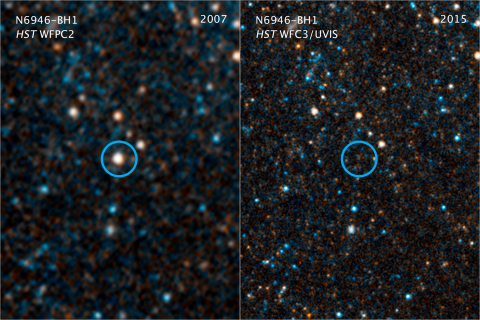A massive, dying star that astronomers thought would explode has instead quietly collapsed into a black hole. The event, which NASA calls a "massive fail," could be a more common pattern for giant stars than astronomers previously suspected.
The star, referred to as N6946-BH1, lived in a galaxy 22 million light years away. Referred to as the "Fireworks Galaxy" for the frequent supernovae—explosions of stars—known to happen there, the star cluster has held NASA's attention for several years.
About eight years ago, N6946-BH1 started to weaken. A few years later, the telescopes aimed in its direction could no longer find it. Astronomers kept searching, probing that sliver of the universe with the Large Binocular Telescope and the Hubble and Spitzer space telescopes. But the star, which once shined with the strength of 25 of our suns, was gone.

The disappearance came as a surprise because most stars perform one final dazzling act before fizzling out. "The typical view is that a star can form a black hole only after it goes supernova," said Christopher Kochanek, who teaches astronomy at The Ohio State University, in a statement.
But that supernova never happened with N6946-BH1. And every alternative explanation for the star's disappearance—maybe it was hiding behind a dust cloud; maybe it was just temporarily dim—was disproven. That left just one option: the star had collapsed into itself and become a black hole.
Such massive fails may be more common than previously believed. Krzystof Stanek, co-author of the study, recently published in Monthly Notices of the Royal Astronomical Society , says the process makes sense. An explosive death might not leave behind the quantity of mass required for forming a giant black hole, Stanek explained. "I suspect it's much easier to make a very massive black hole if there is no supernova," he said in a statement.
During the seven years astronomers have been surveying the Fireworks Galaxy and others for supernovae, they've seen fewer such explosions than expected based on statistical calculations. But this death marks the first time they've observed a star skipping the supernova state. Researchers now think up to 30 percent of huge stars die without a supernova.
Now, where this massive star once glowed, astronomers see only a small amount of infrared light, which researchers believe is from debris falling into a black hole.
Like old soldiers, it seems some massive stars never die, they only fade away.

















